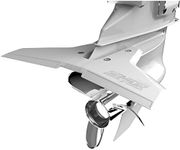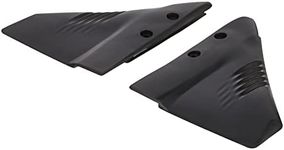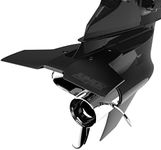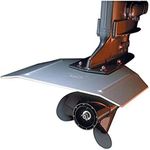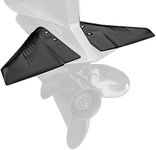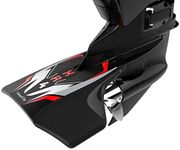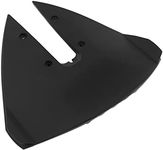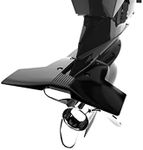Buying Guide for the Best Outboard Hydrofoil
Choosing the right outboard hydrofoil can make a big difference in how your boat handles, especially when it comes to getting on plane faster, improving fuel efficiency, and stabilizing your ride. The key is to match the hydrofoil to your boat size, engine power, and the way you use your boat. Understanding the main features will help you make a choice that fits your needs and enhances your boating experience.MaterialThe material of an outboard hydrofoil affects its durability, weight, and performance. Most hydrofoils are made from either plastic composites or metal (like stainless steel or aluminum). Plastic hydrofoils are lightweight and resistant to corrosion, making them a good choice for saltwater use and for those who want easy installation. Metal hydrofoils are generally stronger and can handle more stress, which is useful for larger boats or rougher conditions. When choosing, think about where you’ll be boating and how much wear and tear your hydrofoil will face.
Size and Surface AreaThe size and surface area of a hydrofoil determine how much lift it provides. Larger hydrofoils create more lift, which helps heavier boats or boats with underpowered engines get on plane faster. Smaller hydrofoils are better for lighter boats or those that already plane easily, as they won’t create unnecessary drag. To pick the right size, consider your boat’s weight, engine horsepower, and whether you struggle to get on plane or want more stability at lower speeds.
Shape and DesignHydrofoils come in different shapes, such as flat, curved, or winged designs. The shape affects how the hydrofoil channels water and provides lift. Winged or curved designs often offer smoother transitions onto plane and better stability at speed, while flat designs may be simpler and easier to install. If you want a smoother ride and better handling, look for more advanced shapes, but if you just need basic lift, a simple design may be enough.
Compatibility with Outboard EngineNot all hydrofoils fit every outboard engine, so it’s important to check compatibility. This means making sure the hydrofoil can be securely attached to your engine’s cavitation plate and that it’s rated for your engine’s horsepower range. Some hydrofoils are universal, while others are made for specific engine sizes. To avoid installation issues, check your engine’s specifications and choose a hydrofoil that matches.
Ease of InstallationSome hydrofoils require drilling holes in your engine’s cavitation plate, while others use clamp-on or bolt-on systems that don’t require permanent changes. If you’re not comfortable with tools or want to avoid modifying your engine, look for models that are easy to install and remove. If you’re okay with a more permanent setup, you might have more options to choose from. Think about your comfort level with installation and whether you might want to remove the hydrofoil in the future.
Intended Use and Performance GoalsYour main reason for adding a hydrofoil should guide your choice. If you want to get on plane faster, look for hydrofoils designed for maximum lift. If you’re after better fuel efficiency or stability at high speeds, some designs are optimized for those goals. Consider how you use your boat—whether for fishing, watersports, or cruising—and pick a hydrofoil that matches your performance needs.
